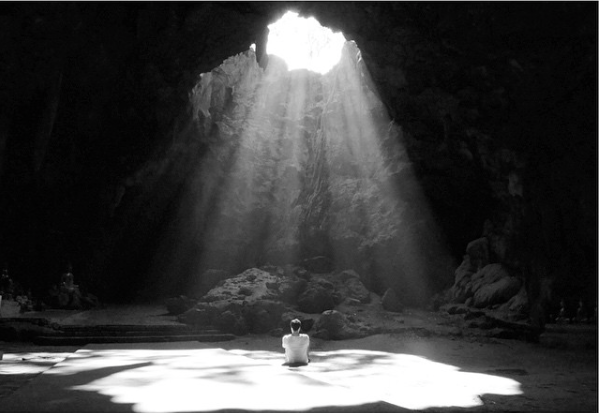
Faced With a Difficult Decision? The 15 Attributes of Effective Decision Makers
“He who has choice has trouble” -Dutch Proverb
“Life does not ask what we want. It presents us with options.” -Thomas Sowell
We make hundreds of decisions a day. Some are made for us or have an obvious choice, and some have been made so many times we are no longer conscious of them (your route to work, when to brush your teeth, etc).
All decisions, even minor ones, can have an impact on the direction of our life – but we tend to give the most attention to the difficult ones.
A difficult decision is one that has no inherent obvious choice. It assumes:
- Choice A isn’t better than Choice B
- Choice B isn’t better than Choice A
- Neither choice is better than the other overall, they both have merit
A difficult decision can be as arbitrary as deciding between two TV shows to watch. Neither option is better than the other, both are equal. The decision is indeed difficult, but usually doesn’t keep us up at night.
However, our life will eventually hit multiple crossroads, requiring us to make those difficult life decisions. These are the ones that keep us up at night, cause impulsive pro/con lists, and have us asking every friend, family member, and random acquaintance their opinion on the matter.
Deep down we know that our decisions are important, but the overwhelming responsibility of choice can paralyze us.
We start to let ourselves drift, allowing life to make our decisions for us. This robs us of our rightful agency to direct our own path. We need to balance the gravity of our decisions, along with the willingness to accept their outcomes.
Some people are better at attacking these decisions than others. The following is a list of the attributes that effective, efficient, and thoughtful decision makers use to move through their dilemmas with greater ease.
1. They Use Multiple Perspectives
Difficult decisions create a barrage of scattered thoughts, feelings, and perspectives. After a while, the amplified emotion and cognitive distortions start to cloud our judgment and creates blind spots. Effective decision makers know how to slow down, and spend time looking at the choices from multiple perspectives.
My favorite example of this concept is shown in this video from The School of Life
The video describes the decision making perspectives of: courage, caution, death, enemy, and gut.
These vantage points allow us to sort out those scattered thoughts and feelings while decision making. It can help us separate our “parts” that are in conflict.
Take for example the common clash of the heart vs. mind. The heart tells us what we want to do, while the mind says what we should do.
Seeing these separate parts clearly, we can see that we are not just one self. Instead, we are a composite of multiple selves, that have their own motivations, values, and opinions. A decision is difficult when these selves are at a stalemate, no one is winning the chess match.
Being able to honestly assess these different perspectives and selves provides for a more well informed decision making process.
Remember: Use multiple perspectives
2. They Limit Their Options
Research has shown how we can become quite illogical when faced with the possibility of a loss of options while decision making.
People in these studies will try to keep a less desirable option available, when logically, it should have been eliminated a long time ago.
This fear can force us to keep too many options open. Effective decision makers know they’re better off limiting their options.
You can see this play out in the dating app culture. Choosing someone to date is like seeing all those options of cereal at the grocery store. You pick one that you like, but after a week you start to wonder if you’d be happier with a different cereal. You can imagine the process being a bit easier in a small town without any apps, compared to the thousands of matches on your bumble account.
Effective decision makers may still fear the loss of options, but they can better manage the feeling. They can let go of unnecessary options so they can focus on the ones that make most sense.
Remember: Limit your options.
3. They Accept The Future is Largely Unknown
Part of why we get stuck with decisions is believing we can predict the future. Frivolously imagining the perceived outcomes, we begin to believe in our fortunetelling abilities.
Learning to let go of irrational attempts to predict the future allows more fluidity in our decision making process. It can help us live in the present moment, instead of trying to overly control our imagined outcome.
This concept is tough for those that like control and perfectionism. Making difficult decisions requires some level of surrender to the reality that our lives are largely unpredictable.
Of course there’s a balance, being thoughtful and conscious when making decisions is important, but only to a certain degree before we end up in fetal position wishing someone would decide for you.
Remember: Be willing to let go of the belief that you can predict the future.
4. They Know Their Values/Purpose/Goals
As we make decisions, we have the chance to guide our life towards our core values, goals, and purpose. If we are unaware of what these are for ourselves, we have no footing when making assertive decisions.
Without knowing and using our values, our life is tossed around aimlessly like a napkin flying around a windy baseball park. We’ve become lost, confused, and passive.
Research has found that individuals who are goal-oriented, and with higher self-awareness, performed better on decisions-making tasks.
Spending time reflecting on your values, goals, and direction colors the decision making process with what’s important to you. It’s so easy to fall into social norms and pressures while contemplating a decision.
Being keen to your prioritized values is also helpful when doing decisions making exercises such as a pros/cons list.
Remember: Allow your values, goals, and purpose to inform your decisions.
5. They Do Their Homework
Tonya had always wanted to work in advertising. She started taking classes at the local college and after her first year, was still inspired by the career choice. The following summer she started to have floating thoughts about her passion for teaching (her mother was a teacher at the a grade school.) She was now torn with which to pursue her sophomore year.
She accepted a new homework assignment for the summer. She interviewed people already in the two careers, did a pros/cons list, shadowed someone that taught summer school, allocated time to self-reflect, and listened to her intuition.
Effective difficult decision makers know that doing their homework is a responsible action step in helping along their process. However, they also know that it may not always give them a clear-cut answer. It’s just another step in the process.
*Make sure that if you’re involving others in your decision process that they are trustworthy, well-intentioned, positive resources.
Remember: Do your homework
6. They Actively Avoid “Choice Overload”
Take a second to think about the amount of decisions you make in one day.
What to have for breakfast, what line to get into at the grocery store, which pasta sauce to buy, when to take the dog out, etc.
The researcher, Sheena Iyengar, specializes in the study of choice. Her research sheds light on a concept she calls, “choice overload problem”.
More so in western culture, we are constantly bombarded with an overload of choices. There’s no better example than what we see in a consumer culture with thousands of choices. Just going to the grocery store, scanning Netflix, or online shopping can cause decision fatigue.
There’s a reason why people like Mark Zuckerberg and the late Steve Jobs wore the same clothes every day. It’s one less decision, allowing that energy to be put towards more important decisions.
In order to have sufficient energy to make the important decisions, we have to adjust to a culture saturated with meaningless decisions.
For life decisions, it’s important to be mindful of when you’re spending time thinking about the decision. Is it at the end of long day after you’ve already had to make multiple decisions during the work day? Probably not the best time to seriously reflect on your upcoming decision whether to propose to your girlfriend.
Remember: Reduce energy spent on arbitrary decisions.
7. They Accept There’s No “Right” and “Wrong” Decision
“The problem is that we have been taught to “Be careful! You might make the wrong decision!” A wrong decision! Just the sound of that can bring terror to our hearts.” -Susan Jeffers
Some decisions are a matter of quantifiable variables. Imagine you’ve just caught two fish, but you only have room in the boat for one to bring home. The decision which to keep can easily be solved by weighing the fish. One is heavier than the other, easy.
We can get trapped into believing our life decisions are like weighing two fish. We want to assume there is an objective, measurable “right” choice. We dream of having a decision manual to find on page 46 a clear, impartial answer to our dilemma.
But with life decisions, we don’t work with definitive measurements – instead we are using personal values. These won’t get us an exact “right” decision . Your value of having more free time or making more money when deciding between two jobs isn’t like choosing which fish is heavier.
We assume that a ‘wrong’ decision will deprive us of some pleasure. When in reality, most difficult decisions have their own unseen and not-yet-rationalized pleasures that happen once a decision is made.
Decisions give us the freedom to live how we want. Another person with the same decision might not choose the same thing. There is no objective “right” choice.
Existentialism reminds us that as human beings, we carry the burden of making rational decisions despite the fact we live in an irrational universe. At times, our human super power of reason gets the best of us – failing to remember the chaotic and irrational world we live in. The ‘universe’ doesn’t work with absolute rights and wrongs, so why should we?
Remember: Accept there’s no “right” and “wrong” decision.
8. They Understand The Cost of Not Making A Decision
We sometimes assume that the choices in front of us are the ones that hold the most risk – while failing to realize the risk of not making a decision.
Let’s consider the dilemma whether to move to Seattle or Portland. Each location has its merits, but remains a difficult decision – one where neither option is objectively better than the other.
We spend countless days and months trying to decide, neglecting the fact that living in our current city may be having negative consequences (Job sucks, your ex keeps inviting themselves over, and your apartment doesn’t have air-conditioning).
It’s the status-quo bias: when we stay in a certain situation so long that we become blind to the negative elements. Over time, we have adapted, and are somewhat ignorantly immune to our own reality.
Effective decision makers take into account the cost of non-action. Thoroughly understanding that not making a decision is the same as making a decision to keep their current circumstances.
Because of this, they ‘acknowledge today’s choice.’ They fully embrace the decision they have made for that 24 hours to decide to NOT make a decision. This allows them to continue to blend this perspective in with their current choices.
Remember: Acknowledge the cost/benefits of NOT making a decision
9. They Aren’t Hard on Themselves
Wrestling with a difficult decision could easily awaken our inner critic. It starts barking at us, “if only you were smarter you would know what to do”.Decisions are tough enough without an onslaught of self-deprecation.
We only have so much information at our disposal. Again, these decisions don’t always have black and white solutions; they are complex, as we are ever-evolving with an unknown future.
If we hold our decisions to a standard our competency, then when we DO choose something and it doesn’t pan out as we had hoped; we are more likely to get upset with ourselves.
Instead, realizing our humanity at the front end of a decision, will allow a more balanced, and compassionate view of ourselves, and the decision, no matter the outcome.
Remember: Practice self-compassion throughout the process.
10. They Can Tolerate The Feeling Of Responsibility
Research has found the feeling of responsibility to be a major factor in people’s “choice avoidance.” People would rather choose a default option or maintain the status quo then assume responsibility. They also found that the feeling of responsibility increases depending on if other people would be affected by the decision.
As responsibility increased, so would the chances that a participant would rely on another person to choose on their behalf.
Our comfort level with taking responsibility in our everyday lives will likely impact our comfort level in making decisions, even small ones.
Effective decision makers usually come equipped with a healthy narcissism. They can still account for the effect the decision may have on others, while maintaining a confidence that if the decision were to have “negative” implications that their self-esteem would still be intact.
Tolerating the feeling of responsibility for our decisions allows us to take greater responsibility for our lives. A virtue of integrity, that can make life even sweeter.
Remember: Get comfortable with the feeling of responsibility.
11. They’re Confident They Can Handle Any Outcome
“Security is not having things; it’s handling things.” -Susan Jeffers
A difficult decision is usually littered with fear of what could happen. If we are anxious about a decision, we start to catastrophize, dreaming up the worst case outcomes.
Behind all fear is a belief that “I will not be able to handle the outcome.”
We can get stuck during the decision making process when we underestimate our ability to DO something once the “worst” happens.
- DECISION:“What if I choose a new career and I don’t make enough money, my partner’s upset, and I burn through all my savings!
- I Can’tHandle It:“Oh man, that would suck!” (thought process stops)
- I CanHandle It:“I will find a way to make money, we could go to couples therapy, and I’ll devise a budget over the next 3 years to recoup my savings.
Reminding yourself of your agency to handle any outcome can reduce fear and help put the decision in a clearer perspective.
Remember: Remind yourself of how you can (and will) handle the perceived negative outcomes of your decisions.
12. They Make Time to Mindfully Reflect
A difficult life decision warrants uninterrupted, mindful time for reflection. To sit down and map out your perspectives, write pros/cons, and do the homework to make a decision with integrity.
It doesn’t have to be hours on end, sometimes a few 5-10 minute mindful reflections could transform our stance on an impending decision.
People can underestimate how much their emotions can impact their decisions – being able to settle our mind and emotions during reflection is key to a sound decision making process.
Remember: Take time to mindfully review your decision.
13. They Curb Impulse And Avoid Analysis Paralysis
Difficult decisions can be stressful, there are two ends of the spectrum we would hope to avoid when under stress of a dilemma.
- When we think about a decision for far too long, and start to overthink it – we can fall into ‘anaylsis paralysis.’ We’re frozen in time, delaying making a choice.
- There is also something called action-bias. It’s what happens when we are stressed while with a decision and become impulsive instead of thoughtful. “I have to do something even though I don’t know what to do!”
Effective decision makers land somewhere in the middle, where they don’t make rash, impulsive decisions just to make one – and they don’t let themselves fall prey to analysis paralysis.
Remember: Don’t make an impulsive decision just to make one, and don’t allow yourself to fall into analysis paralysis
14. They Whole Heartedly Commit To Their Decisions (And Close Doors Behind Them)
There is no better metaphor for this than the story of commander Xiang Yu. Xiang led his army across the Yangtze River to attack the army of the Qin Dynasty. Him and his troops docked on the shores of river to rest for the night before the invasion. Upon awakening, the troops were surprised to find Xiang had set fire to all the ships and had smashed all their cooking supplies.
Xiang explained that without their ships or supplies they had no choice other than to win the battle, or die trying. The troops went on to win nine consecutive battles against the Qin army.
Commander Xiang’s actions help us understand the importance of closing doors behind us and wholeheartedly committing to our decisions.
When we commit to our decisions, we save valuable energy that would be spent thinking about our exit strategies – we’re not half in and half out. The 100% commitment allows for greater attention, focus, and effort to the direction we have faithfully chosen.
Remember: Wholeheartedly commit to your decisions.
15. They Have Faith in the Long Game
After making a decision, It’s easy to make a snap judgement on how “good” the decision was. Effective decision makers know the game isn’t over yet. A decision’s outcome could take months, or years to see the positive return.
Someone’s “wrong” decision to go to law school (after not becoming a lawyer) becomes the decision that lead to them meeting their future husband or wife, utilize knowledge from the program a decade later, or reconnect with a former peer which leads to a key opportunity.
They also understand that a decision may not provide absolute happiness every day after they make it. They have faith in the process after a decision is made, often less focused on the immediate product.
Remember: Be patient after making a decision, and enjoy the process.
The 15 things to remember when faced with a difficult decision
- Use multiple perspectives
- Limit your options.
- Be willing to let go of the belief that you can predict the future.
- Allow your values, goals, and purpose to inform your decisions.
- Do your homework
- Reduce energy spent on meaningless decisions.
- Accept there’s no “right” and “wrong” decision.
- Acknowledge the cost/benefits of NOT making a decision
- Practice self-compassion throughout the process.
- Get comfortable with the feeling of responsibility.
- Think of how you can (and will) handle the perceived negative outcomes of your decisions
- Take time to mindfully review your decision.
- Don’t make an impulsive decision just to make one, and don’t allow yourself to fall into analysis paralysis
- Wholeheartedly commit to your decisions.
- Be patient after making a decision, and enjoy the process
Last Reminder – Relearning the Art of Courage
“The pain of regret far outweighs the pain of risk.” -Jay Shetty
“Indecision steals many years from many people who wind up wishing they’d just had the courage to leap.” -Doe Zantamada
“We need to vigorously re-learn the art of courage, to remember that the happiest lives have invariably had inflection points where people did the slightly unexpected and weird thing, took a gamble, and won.” -The School of Life
These quotes remind us that at the heart of the decision making process is a need for courage. It reminds us that decisions can be scary, and that taking a risk causes far less pain than the feeling of regret. Only problem is that regret might not be felt for years, maybe decades later.
Courage allows us to act, to not let life choose for us, and not always take the safest option.
Part of my mission as a therapist is to help others actualize a fulfilling life. To me, a fulfilling life requires moments of making the “slightly unexpected and weird” decisions. It’s scattered with courageous acts, where fear was replaced with faith, and indecision replaced with committed action.
We need to understand the potential consequences of our decisions, but also realize the power of courageous choice at those inflection points throughout our lifespan. Our limited time on earth would hopefully be marked by the embrace of the immediate pains of risk, rather than the delayed agonies of regret.












